Countertop 101
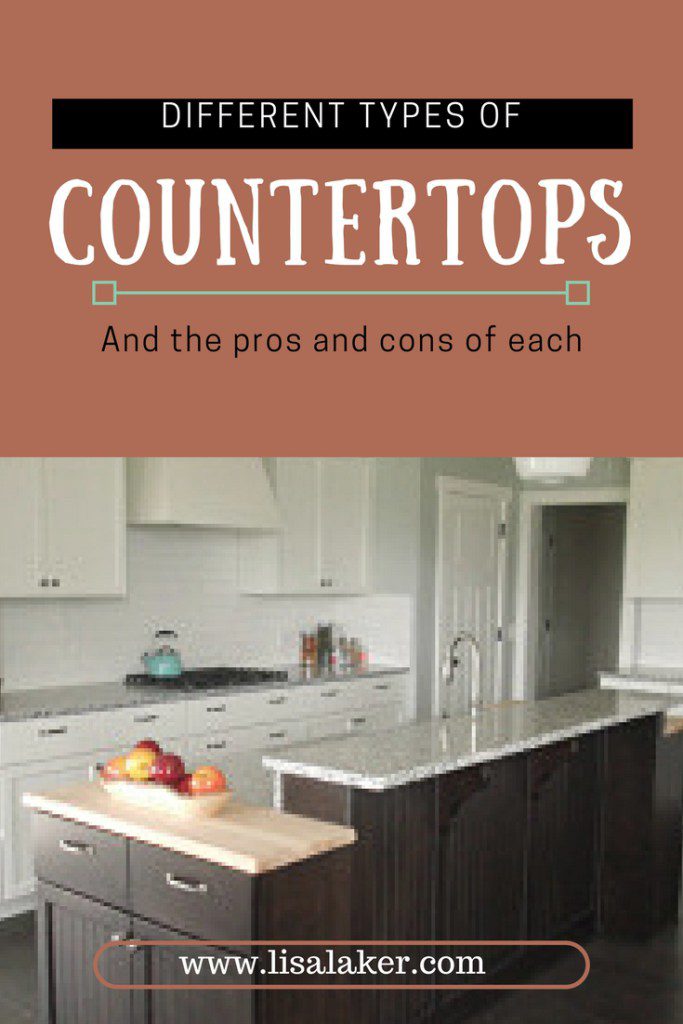
The countertops in your home are among the hardest working surfaces: they’re exposed to acidic foods, high temperatures, stains, knifes, loads of heavy groceries, and children. And after all the daily abuse we put them through, they are expected to survive and shine like the day they were installed!
Not all countertop materials are up to that daily challenge! But with the technology used to build and produce countertops today, most are pretty close!

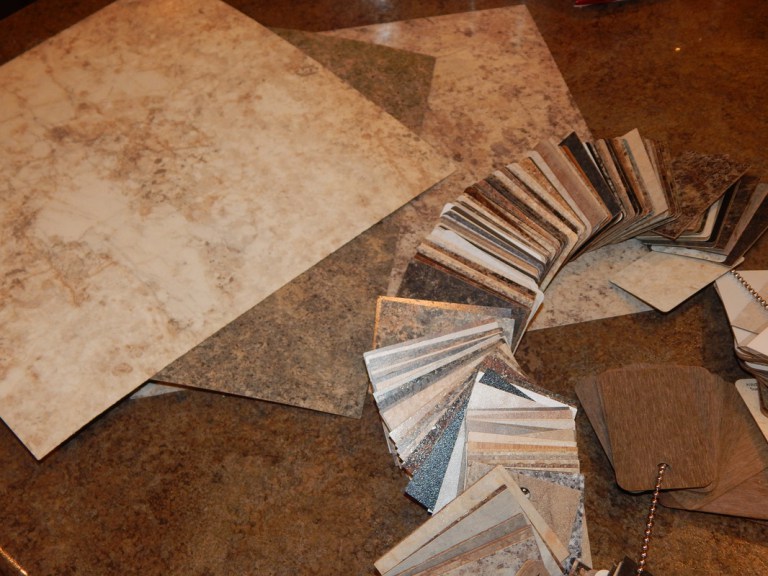
LAMINATE
Laminate countertops are the least expensive way to go. There are tons of color options ranging from a sleek contemporary style to a “safe” traditional look. Over the past few years there have been several patterns added that mimic granite.
Least expensive doesn’t necessarily mean cheap. I just pulled some out of a kitchen from the 60’s that were in fair shape. And we just replaced a set from the 70’s that were still in pretty good shape (minus some minor scratches). Since laminate tops are built much better today than they were 40-50 years ago, as long as they are taken care of, they can last in your home too.
Pros: inexpensive ($800-$1200 for an average kitchen), variety of colors and patterns, durable, easy to maintain
Cons: chips can’t be repaired, can scratch and burn
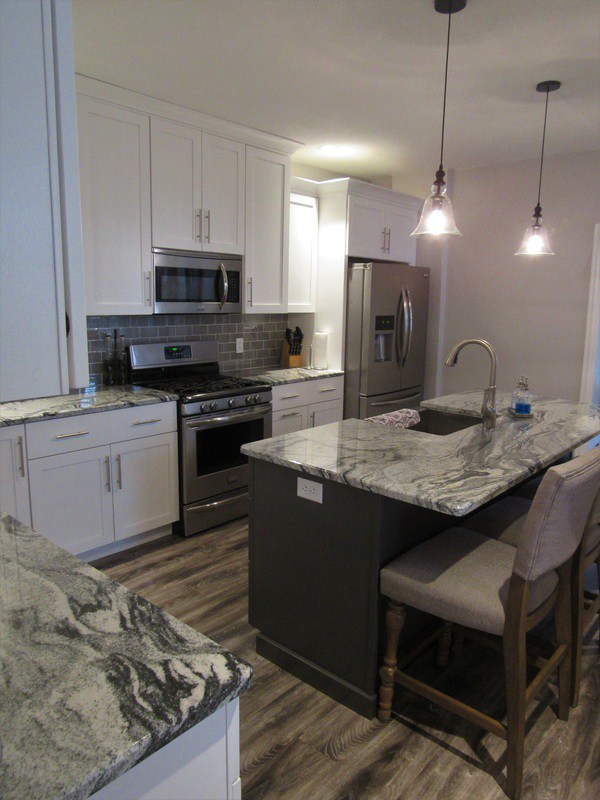
Granite
Granite, once only found in high-end kitchens, has become much more prevalent today. Granite comes in countless patterns and colors. Since it is pulled directly from the earth, no two slabs are the same. Two people installing the same color of granite could end up with 2 very different looking slabs. When choosing granite, you typically go directly to the fabricator and select and inspect the slabs yourself.
People tend to shy away from granite because of the maintenance but the impregnating sealers that are used today last 15+ years now, not 1-2. The popularity and availability of granite has regulated prices somewhat, but it’s still not cheap. Expect to pay between $45 to more than $200 per sq ft, depending on the granite color and complexity of the fabrication. Even a small remnant piece for a bathroom can run $500+ because it still has to be cut, polished, sealed, and installed.
Pros: natural, scratch resistant, heat resistant, can last a lifetime
Cons: expensive, may need maintenance
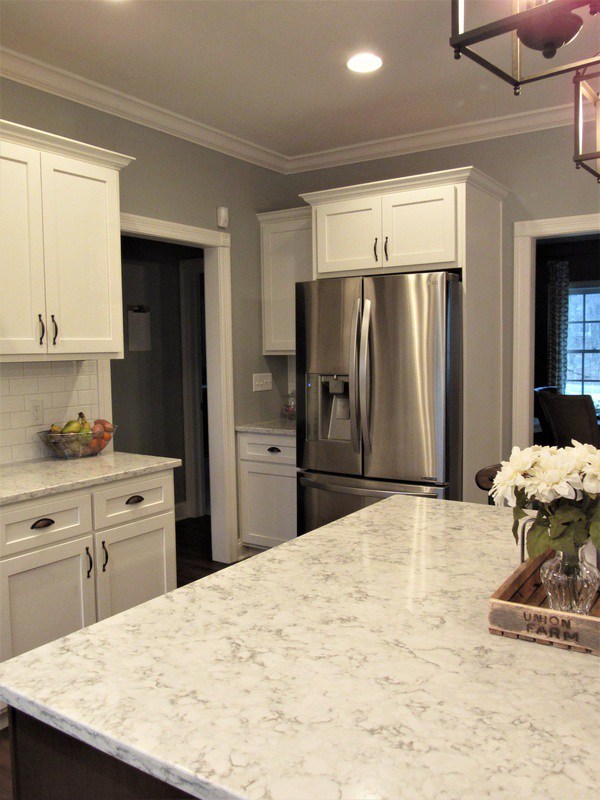
Quartz
Quartz countertops are becoming more popular than granite.
They are composed of 90% quartz mixed with a hard epoxy resulting in a material that looks like natural stone. Since the product is man made, each slab looks the same so selecting a color of quartz can be done by looking at samples rather than the entire slab. A few short years ago, quartz countertops were more expensive than stone but since there are now many more manufactures competing for your business, the price has become stabilized ranging from $50-$100 a square foot depending on the manufacturer, color, and the complexity of the installation.
Pros: scratch resistant, heat resistant, easy to maintain, can last a lifetime
Cons: expensive
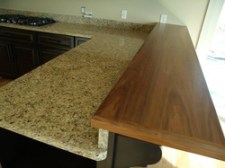
Wood Tops
The warm look of wood countertops is stunning. They are typically comprised of a hard maple because of the density and hardness. But walnut (pictured), oak, and teak are also popular choices. If sealed with a polyurethane coating, they can not be used as a cutting or food prep surface. But they look beautiful and hold up well in accent applications. Scratches and dents are rarely avoided on wood surfaces but the beauty of problem is that they can be sanded down and resealed. On the bright side, a scratched and dented up surface can be part of it’s patina. This surface isn’t for the average perfectionist. Prices vary depending on wood type and thickness.
Pros: warm, natural
Cons: scratch, dent, can be expensive, require maintenance
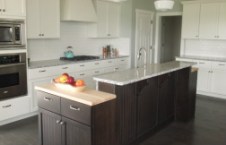
Butcher Blocks
Many people avoid butcher block countertops because they are believed to harbor bacteria. But opposite is actually true. During a study where butcher block surfaces were intentionally contaminated, 99.9% of the bacteria died within 3 minutes of being exposed. This proved that wood cutting boards are actually safer than plastic. Their timeless beauty works great as a chop block or a baking prep area. Butcher Block tops are to be sealed with mineral oil which does require an application every 4-6 weeks.
Pros: warm, great for chopping and rolling dough, unique look
Cons: require maintenance, porous, scratch
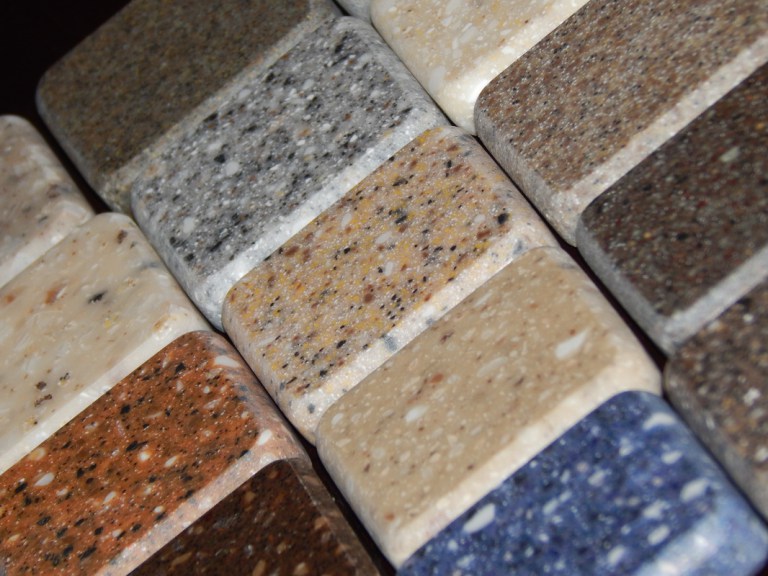
Solid Surface
Acrylic countertops come in a variety of colors and patterns. For a price, these can be made to mimic stone, wood, and glass. They can be designed with intricate inlays, texture, and lighting effects. These surface will scratch easily but because solid surface is solid, the scratches can be buffed and sanded out to look new again.
Pros: seamless installation, can be renewed, come in a variety of choices, limitless design possibilities, integrated sink
Cons: not heat resistant or scratch resistant, fairly expensive
Choices in countertops are endless. I covered the most popular but they aren’t limited to: glass, stainless steel, soapstone, limestone, travertine, cultured marble, marble, and onyx. Their unpopularity stems from cost, maintenance, and durability.
